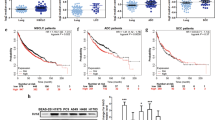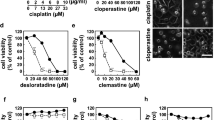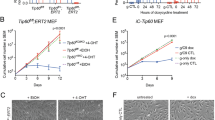Abstract
The role of mast cells in tumor growth is still controversial. In this study we analyzed the effects of both histamine and pre-formed mediators spontaneously released by mast cells on the growth of two human hepatocellular carcinoma cell lines, HA22T/VGH and HuH-6, with different characteristics of differentiation, biological behavior and genetic defects. We showed that total mast cell releasate, exocytosed granules (granule remnants) and histamine reduced cell viability and proliferation in HuH-6 cells. In contrast, in HA22T/VGH cells granule remnants and histamine induced a weak but significant increase in cell growth. We showed that both cell lines expressed histamine receptors H1 and H2 and that the selective H1 antagonist terfenadine reverted the histamine-induced inhibition of HuH-6 cell growth, whereas the selective H2 antagonist ranitidine inhibited the histamine-induced cell growth of HA22T/VGH cells. We demonstrated that histamine down-regulated the expression of β-catenin, COX-2 and survivin in HuH-6 cells and that this was associated with caspase-3 activation and PARP cleavage. On the contrary, in HA22T/VGH cells expression of survivin and β-catenin increased after treatment with granule remnants and histamine. Overall, our results suggest that mediators stored in mast cell granules and histamine may affect the growth of liver cancer cells. However, mast cells and histamine may play different roles depending on the tumor cell features. Finally, these data suggest that histamine and histamine receptor agonists/antagonists might be considered as "new therapeutic" drugs to inhibit liver tumor growth.
Similar content being viewed by others
Article PDF
Author information
Authors and Affiliations
Rights and permissions
This is an Open Access article distributed under the terms of the Creative Commons Attribution Non-Commercial License (http://creativecommons.org/licenses/by-nc/3.0/) which permits unrestricted non-commercial use, distribution, and reproduction in any medium, provided the original work is properly cited.
About this article
Cite this article
Lampiasi, N., Azzolina, A., Montalto, G. et al. Histamine and spontaneously released mast cell granules affect the cell growth of human hepatocellular carcinoma cells. Exp Mol Med 39, 284–294 (2007). https://doi.org/10.1038/emm.2007.32
Published:
Issue date:
DOI: https://doi.org/10.1038/emm.2007.32
Keywords
This article is cited by
-
Expression pattern and prognostic potential of histamine receptors in epithelial ovarian cancer
Journal of Cancer Research and Clinical Oncology (2023)
-
Serum histamine and acetylcholine variations as new noninvasive biochemical markers in staging of experimental hepatocellular carcinoma
Clinical and Experimental Medicine (2019)
-
Mast cells: an expanding pathophysiological role from allergy to other disorders
Naunyn-Schmiedeberg's Archives of Pharmacology (2012)
-
The Biomechanical Properties of 3d Extracellular Matrices and Embedded Cells Regulate the Invasiveness of Cancer Cells
Cell Biochemistry and Biophysics (2011)



